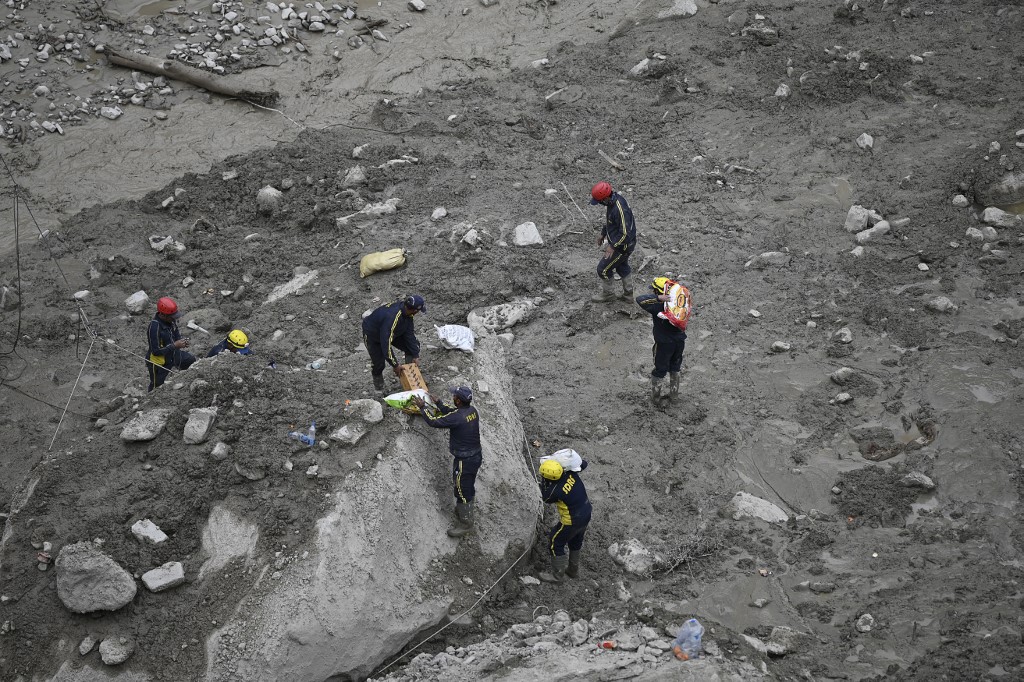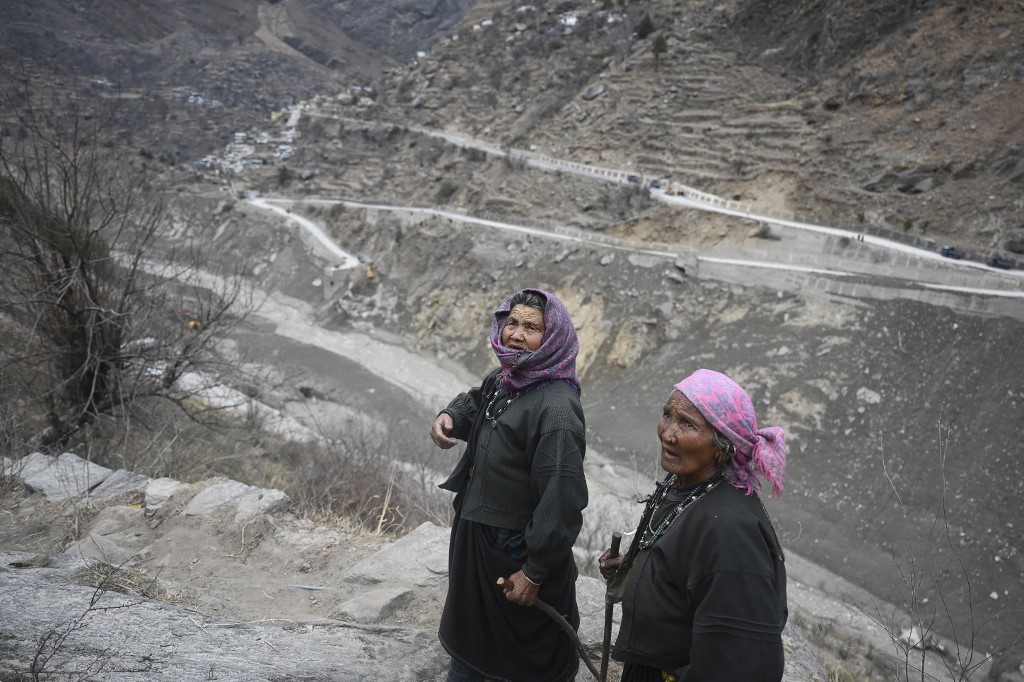
by Jalees Andrabi and Aishwarya Kumar in Kochi
Agence France-Presse
TAPOVAN, India (AFP) — A whistle turned into a roar of water that trapped a dozen men in a Himalayan tunnel after a glacier burst in northern India, but Rajesh Kumar lived to tell the tale.
Twenty-six people were confirmed dead but at least 170 others remained missing Monday after the glacier broke off a mountainside, triggering a flash flood through a valley in Uttarakhand state.
On Sunday, floodwaters swamped a nearby hydroelectric power complex where Kumar and his colleagues were working 300 metres (nearly 1,000 feet) inside a tunnel.
“We didn’t think we were going to make it,” the 28-year-old told AFP from his hospital bed.
“Suddenly there was a sound of whistling… there was shouting, people were telling us to come out. We thought it was a fire. We started running but the water gushed in. It was like a Hollywood movie.”
The men clung to scaffolding rods in the tunnel for four hours, keeping their heads above water and debris, trying to reassure each other.
“We just kept telling each other — come what may, we must not let go of the rods. Thank god our hands did not lose their grip,” said Kumar.

As the flood coursed down the valley, the water started to recede in the tunnel, leaving it filled with more than 1.5 metres of debris and mud.
“We climbed across the rock debris and forced our way to the mouth of the tunnel,” said Kumar.
There they found a small opening but they were not sure where it led.
“All we knew was that we could feel some air.”
Eventually, they saw some light coming through and one of the men got a phone signal and called for help.
There were emotional scenes as Kumar and his colleagues were pulled out of a tiny hole at the surface.
Some punched the air in joy as they saw daylight, some were put straight onto stretchers and carried away. One man put his arms in the air and then fell face-first into the mud.
Despite their hours-long ordeal, they miraculously managed to escape with just minor injuries.
‘Dust and screams’

Shopkeeper Ramesh Negi from Raini village was basking in the Sunday morning sun at his home overlooking the plant when he heard a loud roar and saw a huge wall of water smash into and sweep away a bridge that led to the Chinese border.
Dozens of workers building a concrete dam on the Dhouli Ganga river bed and grazers leading their cattle along the mountain slopes disappeared beneath the sudden deluge, leaving behind a wasteland of grey and brown sludge.
“There was dust and screams all over,” the 36-year-old Negi told AFP.
“We tried to alert the grazers but they were blown away by the wind pressure before being consumed by the water and slush. We can only guess what happened.”
Mangra, another tunnel survivor, still can’t sleep.
On Sunday, he heard a loud, rumbling sound and the screams of other colleagues: “Run, run, run!”
The 28-year-old from Lakhimpur Kheri in Uttar Pradesh state scrambled out of the tunnel.
But six of his friends and neighbours from his village remain trapped, and Mangra can’t stop thinking and praying for them.
“The moment the water came close, it felt like the mountain was crashing and the Earth was moving,” Mangra, who goes by one name, told AFP outside the tunnel, cuts and scrapes on his hands and legs.
“Once the deluge of water rushed past me, there was dust and fear left behind.”
The glacier broke away as the power complex was in full operation, leaving scores of workers at two power plants missing. About three dozen were feared trapped in the U-shaped tunnel.

Late Monday, giant floodlights lit up a tunnel entrance as teams of rescuers carefully searched through the debris with the help of an excavator for signs of life — and human remains.
Hundreds of paramilitary and emergency service workers were also scouring the valley for other survivors.
© Agence France-Presse








